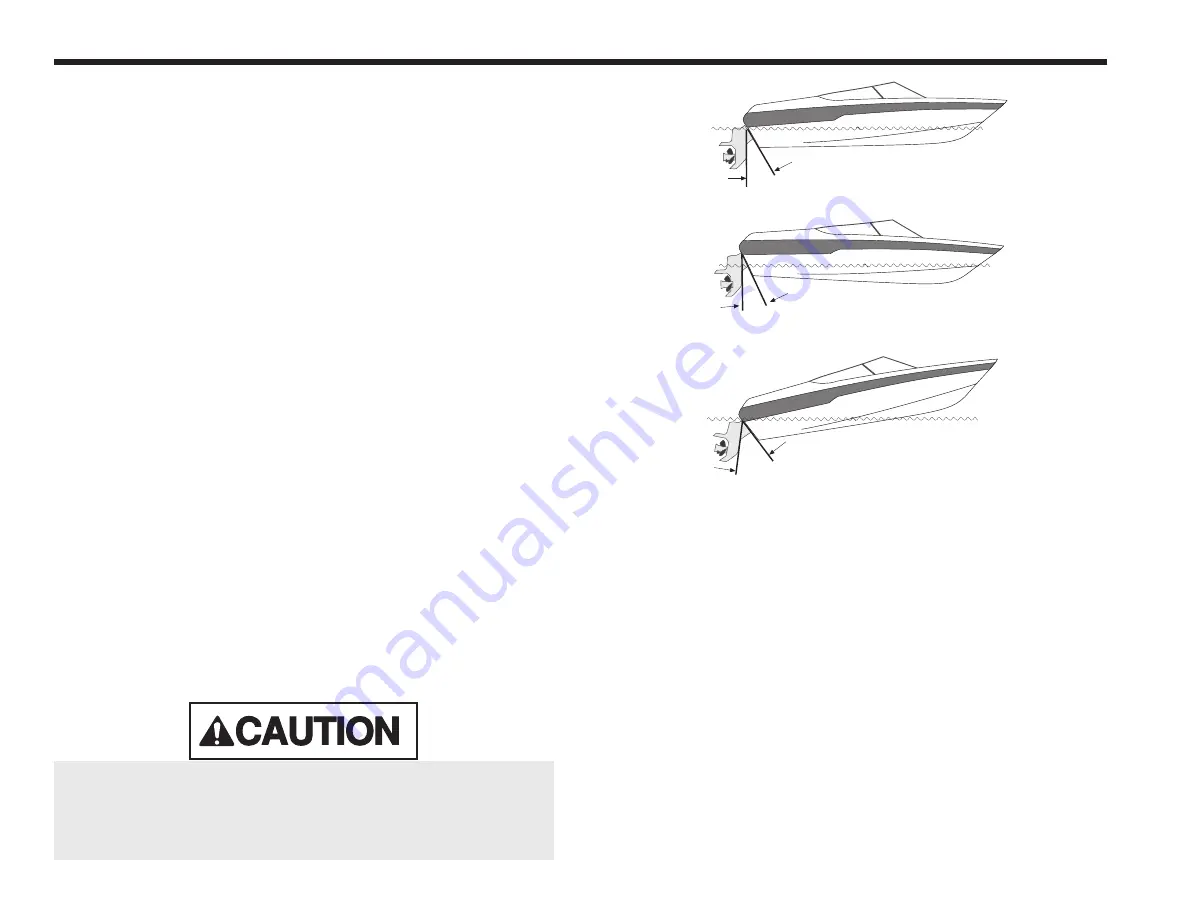
Steering Your Boat
Watch the stern when you turn!
Steering a boat can be compared
to driving a car on slippery or icy pavement.
Be cautious always.
When you turn the wheel, the stern responds first by swinging out in
the opposite direction of the bow. When you are trying to avoid an
object in the water, this swing could turn out to be critical.
Always give yourself plenty of room to make a turn. You also should
slow the speed of your boat while turning. Never make sharp, fast
turns as this could cause loss of control. Remember that your pas-
sengers should be seated whenever you’re underway.
Trimming Your Boat
Trim refers to the way a boat floats on the water. Your boat will work best
when it is trimmed to run at an angle between 3 to 5 degrees to the
water. You can trim your boat by shifting gear or passengers or, if your
boat is so equipped, by adjusting the drive unit angle or the trim tabs.
Power Trim
The operator can adjust his craft to the ideal boat angle for load and
water conditions by trimming the drive unit (Figure 5.3). The power
trim system allows the operator to adjust the drive angle while under-
way by changing the angle of the outdrive in relation to the boat’s
transom. It also allows the operator to raise and lower the drive for
trailering, beaching, launching, or operating in shallow water.
Note: Refer to your engine owner’s manual regarding the oper-
ation of the power trim controls installed on your boat.
Drive Angle
The drive angle of the boat is the relationship between propeller
thrust to the planing surface of the hull’s bottom. You can improve
the performance of the same boat under varying conditions by
adjusting the drive angle.
Moving the drive unit angle towards its innermost adjustment brings
the propeller in as close as possible to the transom. The angle of
the propeller causes an upward thrust which pushes the boat’s bow
downward as shown on Figure 5.3.
By gradually shifting the drive unit from its innermost adjustment
towards the outermost adjustment, the propeller thrust pushes in a
downward motion. This motion as shown in Figure 5.3, tends to lift
the bow.
5-10
CAUTION:
Never trim drive unit up and out using TRAILER
switch while boat is underway. Use extreme caution when oper-
ating with drive unit raised. Severe damage to drive unit may
result if unit is raised beyond the gimbal ring support flanges at
engine speeds above 1200 RPM.
CORRECT
Gives maximum performance
INCORRECT
Causes boat to "plow"
INCORRECT
Causes boat to "porpoise"
Figure 5.3 Trimming the Drive Angle
Summary of Contents for SSX-236
Page 1: ...S S X 2 3 6 2 5 6 2 7 6 2 0 0 9 O W N E R O P E R AT O R M A N U A L...
Page 2: ......
Page 4: ......
Page 17: ...1 7...
Page 18: ......
Page 22: ......
Page 24: ......
Page 40: ...2 16...
Page 52: ...3 12...
Page 80: ...5 16...
Page 98: ......
Page 106: ......
Page 112: ......
Page 113: ...WIRING SCHEMATICS 12 12 1 236 SSX...
Page 114: ...12 2 236 SSX...
Page 115: ...12 3 256 SSX...
Page 116: ...12 4 256 SSX...
Page 117: ...12 5 276 SSX...
Page 118: ...12 6 276 SSX...
Page 119: ......














































